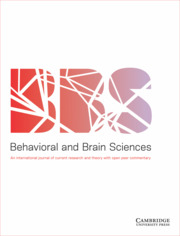Article contents
On specification and the senses
Published online by Cambridge University Press: 30 October 2001
Abstract
In this target article we question the assumption that perception isdivided into separate domains of vision, hearing, touch, taste, andsmell. We review implications of this assumption for theories ofperception and for our understanding of ambient energy arrays (e.g.,the optic and acoustic arrays) that are available to perceptualsystems. We analyze three hypotheses about relations between ambientarrays and physical reality: (1) that there is an ambiguous relationbetween ambient energy arrays and physical reality, (2) that thereis a unique relation between individual energy arrays and physicalreality, and (3) that there is a redundant but unambiguous relation,within or across arrays, between energy arrays and physical reality.This is followed by a review of the physics of motion, focusing onthe existence and status of referents for physical motion. Ourreview indicates that it is not possible, in principle, for there tobe a unique relation between physical motion and the structure ofindividual energy arrays. We argue that physical motion relative todifferent referents is specified only in the globalarray, which consists of higher-order relations acrossdifferent forms of energy. The existence of specificity in theglobal array is consistent with the idea of direct perception, andso poses a challenge to traditional, inference-based theories ofperception and cognition. However, it also presents a challenge tomuch of the ecological approach to perception and action, which hasaccepted the assumption of separate senses.
Keywords
Information
- Type
- Research Article
- Information
- Copyright
- © 2001 Cambridge University Press
- 162
- Cited by

